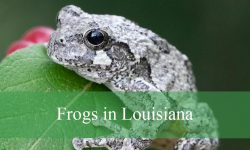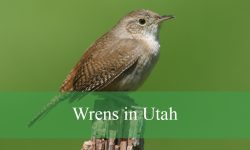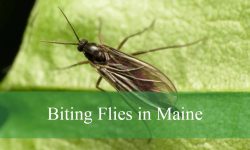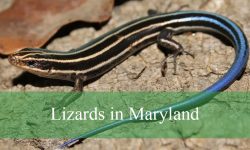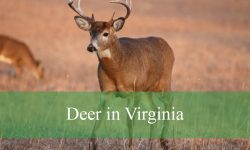Virginia hosts a diverse range of hawks, from widespread species like the Red-tailed Hawk and Red-shouldered Hawk to rare visitors such as the Ferruginous Hawk and Swainson’s Hawk. These birds vary in size, color patterns, hunting strategies, and preferred habitats, making each species unique and interesting to observe. Some are year-round residents, while others pass through the state during migration or appear only in winter, offering birdwatchers different opportunities throughout the year.
This guide introduces 10 types of hawks found in Virginia, providing detailed information on their appearance, size, behavior, and habitats. By learning these key features, birdwatchers and nature enthusiasts can more easily recognize each raptor in the wild and understand their role in Virginia’s ecosystems.
Common Hawks Found in Virginia
Red-tailed Hawk
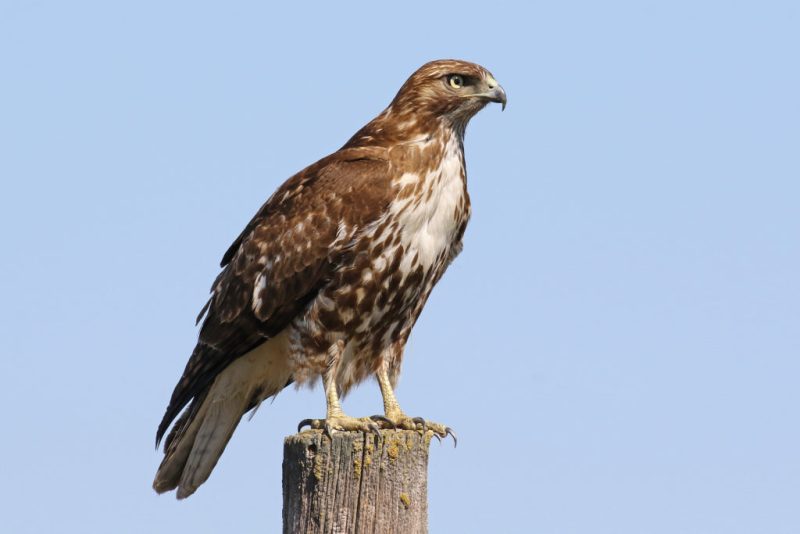
The Red-tailed Hawk is one of the most common and recognizable raptors in Virginia. Adult birds are notable for their broad, rounded wings, robust body, and characteristic reddish-brown tail that is particularly visible in flight. Their plumage varies from light to dark brown on the back with paler undersides streaked with brown.
These hawks measure about 18 to 26 inches in length, with a wingspan ranging from 43 to 57 inches. Males and females appear similar, though females are slightly larger. Their keen eyesight and powerful talons allow them to spot and capture prey efficiently from high perches or soaring flights.
Red-tailed Hawks are versatile hunters, feeding on small mammals such as rabbits, squirrels, and rodents, as well as birds and reptiles. They are often seen perched along highways, in open fields, or soaring over woodlands, scanning for movement below.
In Virginia, Red-tailed Hawks are year-round residents throughout the state. A fun fact: their distinctive “kee-eeeee-arr” scream is widely used in movies to represent any bird of prey, even if it’s not a Red-tailed Hawk on screen.
Red-shouldered Hawk
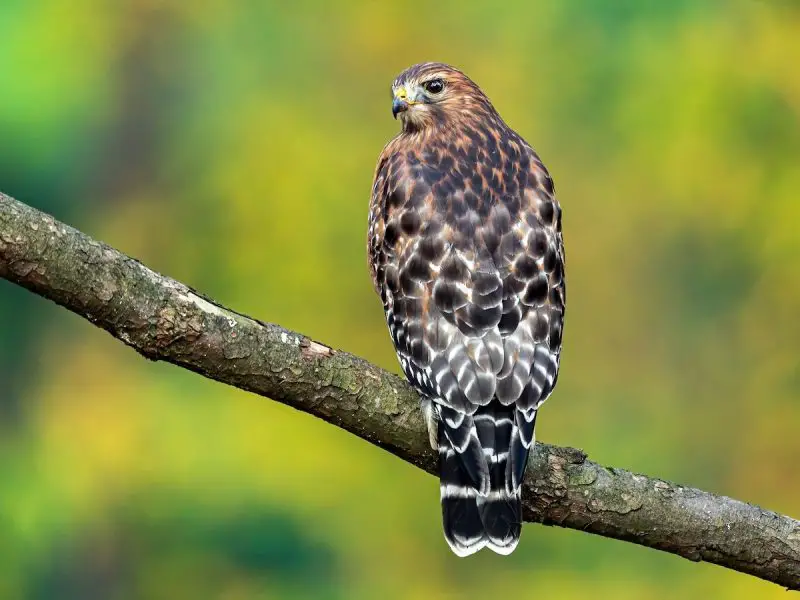
The Red-shouldered Hawk is a medium-sized raptor with striking black-and-white barring on its wings and tail, along with a reddish-orange chest and underparts. Their bold patterning makes them relatively easy to identify, especially when perched in the open or gliding through forested areas.
Adults measure around 16 to 24 inches in length, with a wingspan of 37 to 43 inches. They have a stocky build, rounded wings, and a relatively short tail compared to other hawks. Both males and females share similar plumage, although females are slightly larger.
Red-shouldered Hawks prefer moist woodlands, river bottoms, and swampy areas in Virginia. They hunt from low perches, preying on small mammals, amphibians, reptiles, and occasionally birds. They are known for their loud, repeated “kee-ah” calls, which echo through forested habitats.
In Virginia, Red-shouldered Hawks are mostly permanent residents but may show local movements in winter. Fun fact: they are among the few hawks that nest close to water, often building their stick nests in tall trees over streams or swamps.
Cooper’s Hawk
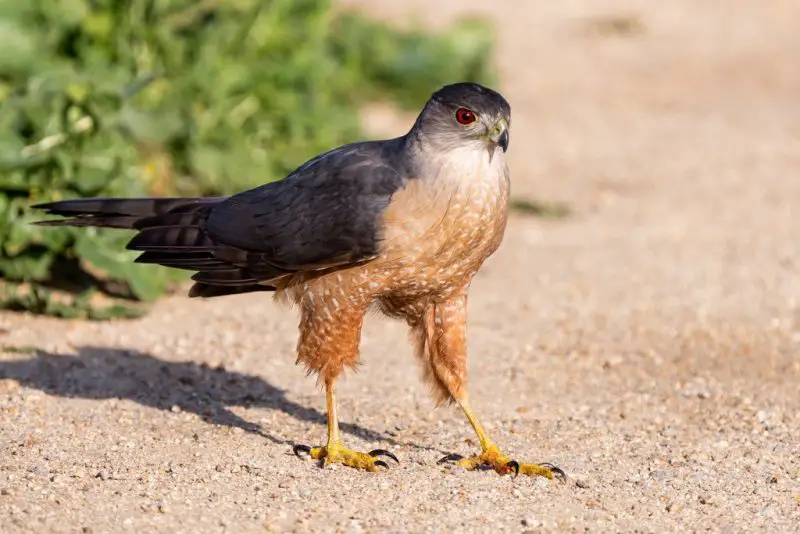
The Cooper’s Hawk is a medium to small-sized hawk with a sleek, long-tailed silhouette and rounded wings. Adults have a bluish-gray back, reddish-barred underparts, and a long tail with dark bands, which aids in maneuverability through dense forests.
They measure 14 to 20 inches in length, with a wingspan of 24 to 39 inches. Females are larger than males, a common trait among hawks. Their long tail and compact wings allow them to pursue agile birds through trees and suburban landscapes with remarkable speed.
Cooper’s Hawks are specialized bird hunters, preying on songbirds, doves, and occasionally small mammals. They often use stealth, swooping from perches or flying low along forest edges and residential areas to ambush prey.
In Virginia, Cooper’s Hawks are widely distributed, often inhabiting woodlands, parks, and even suburban backyards. Fun fact: they have adapted exceptionally well to urban environments, making them one of the few raptors frequently seen near human habitation.
Sharp-shinned Hawk
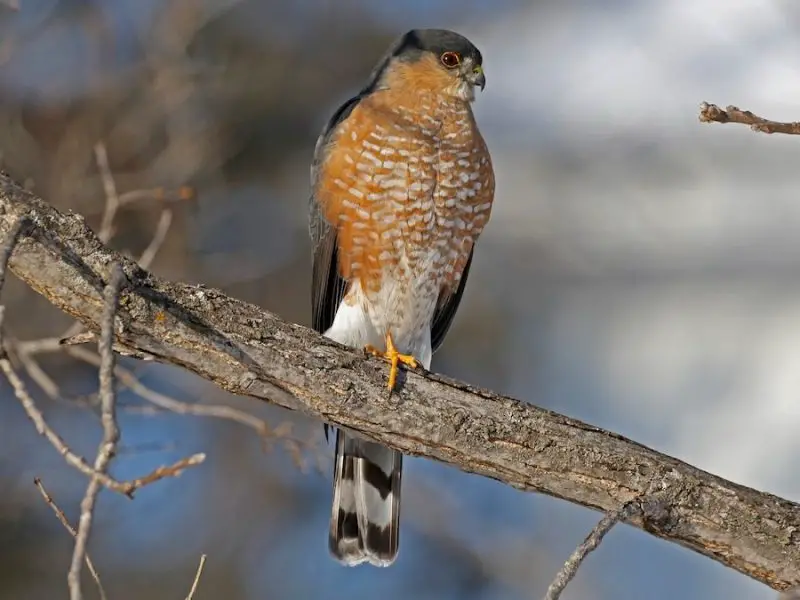
The Sharp-shinned Hawk is the smallest hawk found in Virginia, notable for its compact body, short wings, and long, narrow tail with a squared tip. Its plumage includes bluish-gray upperparts and orange-barred underparts in adults, with juveniles showing brown streaking.
They measure 9 to 13 inches in length, with a wingspan of 17 to 22 inches. Their small size and short, rounded wings give them excellent agility, enabling them to navigate dense forests in pursuit of prey.
Sharp-shinned Hawks primarily hunt small birds such as sparrows, finches, and warblers. They often use surprise attacks, darting through foliage at high speed to catch birds mid-flight. Occasionally, they may take small mammals or insects.
In Virginia, Sharp-shinned Hawks are found in forests and woodland edges, sometimes venturing into suburban areas during migration. Fun fact: despite their small size, they are fierce predators and are capable of taking birds larger than themselves with remarkable skill.
Broad-winged Hawk
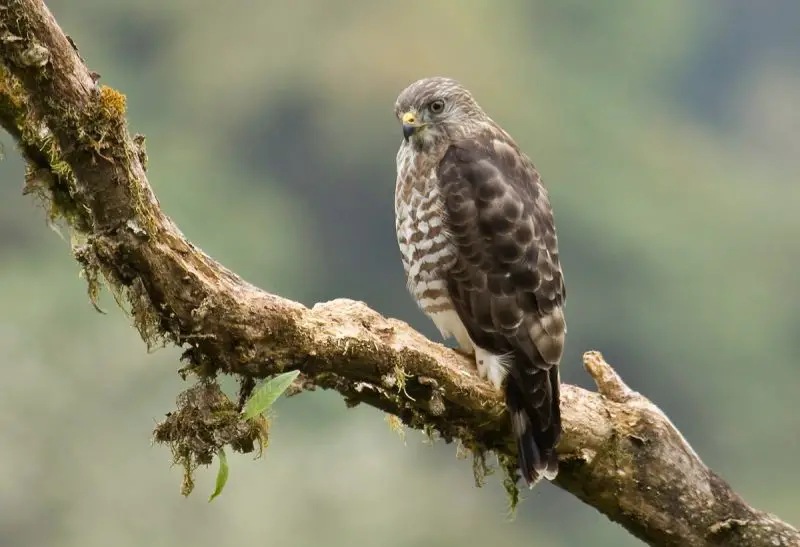
The Broad-winged Hawk is a medium-sized raptor with broad, rounded wings and a short tail. Adults have brown upperparts, finely barred underparts, and striking chestnut barring on the underwings. During migration, they are often seen in large flocks called “kettles,” soaring high in thermals.
They measure 14 to 18 inches in length, with a wingspan of 34 to 39 inches. Males and females appear similar, though females are slightly larger. Their compact body and broad wings make them excellent gliders, conserving energy during long migratory flights.
Broad-winged Hawks feed on small mammals, amphibians, reptiles, and insects, typically hunting from perches within forests or along forest edges. They are less likely to hunt in open fields compared to other hawks.
In Virginia, Broad-winged Hawks breed in extensive forests and migrate in massive groups to Central and South America. Fun fact: during migration, thousands of Broad-winged Hawks can be seen soaring together in thermals, creating one of the most impressive raptor spectacles in North America.
Northern Harrier
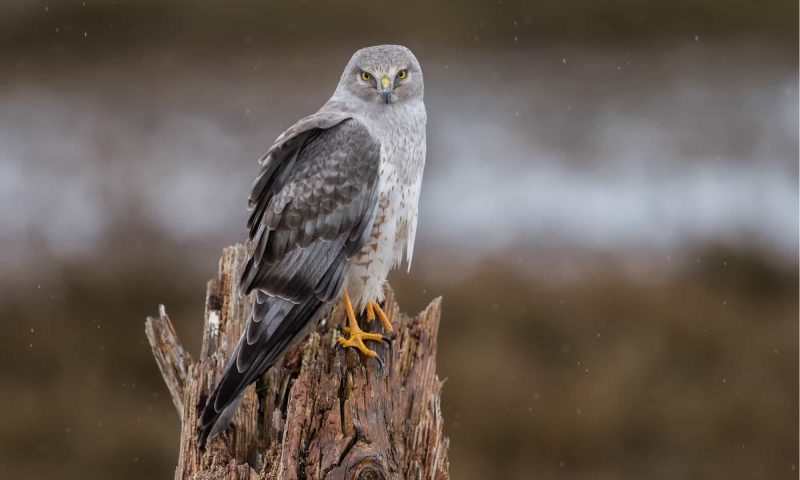
The Northern Harrier is a slender, medium-sized hawk known for its distinctive low-flight hunting style. Adults have a gray (male) or brown (female) back, with a white rump patch that is visible in flight. Their long tail and narrow wings give them a graceful, buoyant appearance as they glide close to the ground.
They measure about 18 to 20 inches in length, with a wingspan of 40 to 46 inches. Northern Harriers are easily recognized by their owl-like facial disk, which helps them detect prey by sound as well as sight. Their long wings allow steady flight over open fields and marshes.
Northern Harriers primarily feed on small mammals like voles and mice, and occasionally birds and amphibians. They hunt by flying slowly just above grasslands or marshes, using their acute hearing and vision to locate prey.
In Virginia, Northern Harriers are most common in open fields, marshes, and grasslands. Fun fact: they are one of the few hawks that rely on both hearing and vision to hunt, making their hunting style unique among raptors.
Rough-legged Hawk

The Rough-legged Hawk is a medium-sized winter visitor in Virginia, notable for its thick feathering on the legs, which helps insulate against cold. Adults display a mottled brown and white plumage, with pale underparts and dark patches on the wrists of the wings visible in flight.
They measure around 18 to 24 inches in length, with a wingspan of 52 to 60 inches. Their feathered legs and broad wings make them well adapted to open, windy habitats, allowing efficient soaring while hunting.
Rough-legged Hawks feed primarily on small mammals such as voles, lemmings, and mice, often hunting from low perches or hovering briefly over open fields. Their flight is buoyant, and they can hover in place before diving to capture prey.
In Virginia, Rough-legged Hawks are uncommon winter visitors, usually found in fields, pastures, and marshes. Fun fact: they are among the few hawks capable of hovering for extended periods, a behavior that helps them spot prey in wide open areas.
Northern Goshawk

The Northern Goshawk is a large, powerful hawk with slate-gray upperparts, pale barred underparts, and striking red or orange eyes. Its broad wings and long tail allow agile maneuvering through dense forests, making it a formidable predator.
Adults measure 20 to 26 inches in length, with a wingspan of 39 to 47 inches. Both males and females share similar plumage, though females are noticeably larger. Their strong talons and sharp beaks are designed to capture medium-sized birds and mammals efficiently.
Northern Goshawks primarily hunt squirrels, rabbits, and other birds, often flying swiftly through wooded areas to ambush prey. They are secretive and tend to avoid open habitats, preferring mature forests and rugged terrain.
In Virginia, Northern Goshawks are rare, mostly inhabiting deep forests and mountainous regions. Fun fact: they are highly territorial and can aggressively defend nests against intruders, including humans and larger raptors.
Swainson’s Hawk
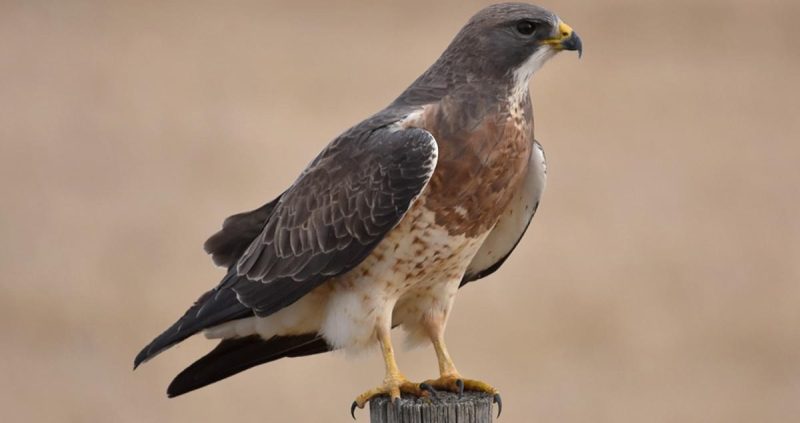
Swainson’s Hawks are medium-sized raptors with long wings, pale underparts, and a rusty-colored shoulder patch. They are slender and built for long-distance migration, often forming large flocks during their journey south.
They measure 18 to 22 inches in length, with a wingspan of 45 to 52 inches. Their pointed wings and long tail aid in soaring for extended periods while searching for prey or during migration.
Swainson’s Hawks feed mainly on insects and small mammals. In Virginia, sightings are rare and usually occur during fall migration, when individuals pass through open fields and farmlands.
This species is extremely rare in Virginia, making any observation noteworthy for birdwatchers. Fun fact: Swainson’s Hawks are known for their long migratory journeys, traveling thousands of miles to wintering grounds in South America.
Ferruginous Hawk
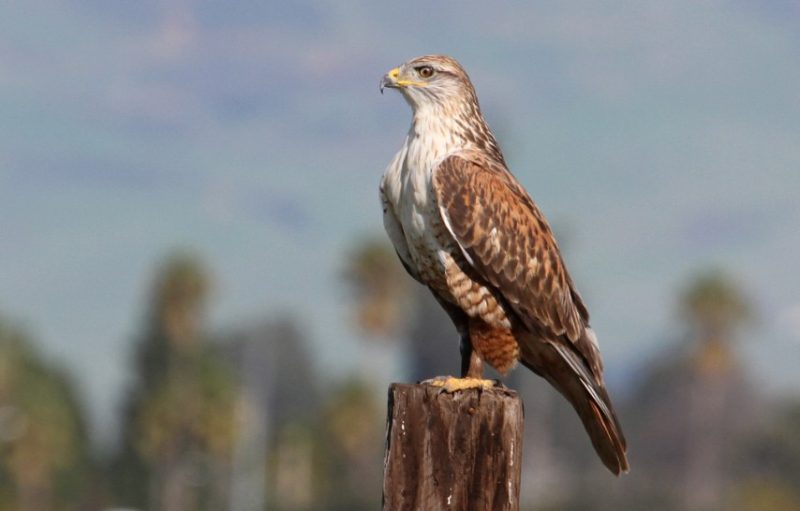
The Ferruginous Hawk is a large, robust hawk with a striking rusty-brown back and pale underparts. Adults have broad, rounded wings and a long, square-tipped tail, giving them a commanding presence in the sky.
They measure 20 to 27 inches in length, with a wingspan of 52 to 56 inches. Their strong, heavy build allows them to capture larger prey, including rabbits and ground squirrels, with powerful talons.
Ferruginous Hawks are opportunistic hunters, often scanning open plains and fields while soaring at moderate heights. They rely on keen eyesight to locate prey across wide areas and may perch on fence posts or low hills while hunting.
In Virginia, Ferruginous Hawks are extremely rare winter visitors, occasionally spotted in open fields or agricultural areas. Fun fact: they are the largest hawk species native to North America’s western plains, making any eastern sighting a remarkable event for bird enthusiasts.
Best Time and Places to Spot Hawks in Virginia
The best time to observe hawks in Virginia depends on the season and migration patterns. Many species, like Red-tailed Hawks and Red-shouldered Hawks, can be seen year-round, while others, such as Rough-legged Hawks, Northern Harriers, Swainson’s Hawks, and Ferruginous Hawks, are primarily winter visitors or rare migrants. Fall migration, from late September to early October, is particularly spectacular for spotting Broad-winged Hawks, which travel in large flocks called “kettles.”
Hawks are most active during the early morning and late afternoon, when they are hunting or soaring to thermals. Open fields, grasslands, wetlands, forest edges, and large woodland areas provide the best vantage points. Migration watch sites, such as mountain ridges and river valleys, also offer excellent opportunities to observe hawks in flight. By visiting these habitats during peak activity periods, birdwatchers have the highest chances of spotting a variety of hawk species across Virginia.
Fun fact: Hawks often return to the same hunting grounds repeatedly, so visiting the same open fields or forest edges on consecutive days can increase your chances of sightings.
FAQs About Hawks in Virginia
What is the most common hawk in Virginia?
The Red-tailed Hawk is the most common hawk in Virginia, easily recognized by its broad wings, large body, and distinctive reddish tail. It can be found in open fields, forests, and suburban areas year-round.
How can I identify a Red-shouldered Hawk?
Red-shouldered Hawks have medium-sized bodies with striking black-and-white barring on their wings and tail. They feature reddish-orange underparts and prefer moist forests, swamps, and river bottoms.
What is the primary prey of Cooper’s Hawks?
Cooper’s Hawks mainly hunt small birds such as songbirds and doves, but they also take small mammals. Their long tails and rounded wings allow them to maneuver quickly through forests and suburban areas.
How does the Sharp-shinned Hawk hunt?
Sharp-shinned Hawks are agile and small, specializing in hunting small birds. They use stealth and speed to dart through dense forests and woodland edges to capture prey mid-flight.
Where can Broad-winged Hawks be seen during migration?
Broad-winged Hawks migrate in large flocks called “kettles.” In Virginia, they can be seen soaring over forests and open areas during spring and fall migration.
What makes the Northern Harrier unique among hawks?
Northern Harriers hunt low over grasslands and marshes, often gliding just above the ground. They have a long tail, slender body, and an owl-like facial disk to detect prey by sound and sight.
When do Rough-legged Hawks appear in Virginia?
Rough-legged Hawks are winter visitors, arriving in Virginia during the colder months. They prefer open fields and grasslands and are distinguished by thick feathering on their legs and broad wings.
How rare is the Northern Goshawk in Virginia?
Northern Goshawks are very rare in Virginia and typically inhabit deep forests and mountainous regions. They are large, powerful hawks that hunt birds and mammals with exceptional agility.
Are Swainson’s Hawks commonly seen in Virginia?
Swainson’s Hawks are extremely rare in Virginia and are usually only seen during fall migration. They are long-distance migratory hawks with pale underparts and rusty shoulder patches.
What is notable about the Ferruginous Hawk?
Ferruginous Hawks are the largest hawks occasionally seen in Virginia. They are extremely rare winter visitors, with a rusty-brown back, broad wings, and a strong build for hunting larger prey like rabbits and ground squirrels.

